 image by André Serranho
image by André Serranho
Last modified: 2021-06-28 by rob raeside
Keywords: italy | tuscany | toscana | pilot |
Links: FOTW homepage |
search |
disclaimer and copyright |
write us |
mirrors
See also:
Other Sites:
Note: Although the Republic of Siena is long gone, after being
conquered by Florence during the Medici period, its flag is still
flown, along with the City and People ones, from the main Gates,
in special days, such as the week of the world famous Palio, as
shown under. Thus it is not presented as an historical flag.
André Serranho
Here is an overview about the flags of the Republic of Siena (Italy, 14th century) shown on a medieval fresco painting: The fresco painting "Guidoriccio da Fogliano" by Simone Martini (1284-1344) (see: www.cisv.it) was painted in 1328 in Palazzo Publico, the seat of the government of the Republic of Siena [1, 2]. It is named after its central character, a condottiere (commander of the mercenary army) who successfully waged a war for the Republic of Siena [3]. The condottiere is shown on the horse, making rounds of the siege of a city. In the camps of his troops and on the fortification they built, there are many flags of Siena, all based on its coat of arms - per fesse argent and sable - but with colours arranged vertically (there are also several shields of arms, with correct blazon).
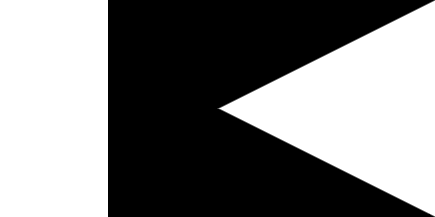 image by Tomislav Todorovic and Mladen Mijatov,
29 April 2006
image by Tomislav Todorovic and Mladen Mijatov,
29 April 2006
The largest - and probably the most important - of these flags is a swallow-tailed white-black bicolour, flown from a tower of the fortification built for the siege, to the right of Da Fogliano. Several small copies of this flag are flown in the camps to the right of the fortification and another one beneath the besieged city, to the left of Da Fogliano.
 image by Tomislav Todorovic and Mladen Mijatov,
29 April 2006
image by Tomislav Todorovic and Mladen Mijatov,
29 April 2006
Another bicolour is a gonfanon with four rectangular tongues. Its several copies are flown in the camp in the bottom right corner of the painting and another small one beneath the besieged city, close to the legs of Da Fogliano's horse (in fact, far behind it, as the condottiere is observing the siege from the distance).
 image by Tomislav Todorovic and Mladen Mijatov,
29 April 2006
image by Tomislav Todorovic and Mladen Mijatov,
29 April 2006
The third bicolour, flown in the camps to the right of the fortification, is a gonfanon with three tongues. It is sometimes charged with a horizontal crossbow, partly (half of the buttstock) on the black and partly on the white. It was not possible to determine its exact colour (red, gold or proper) from the available reproduction of the painting [1], but as it does not always appear on this flag, it is clearly not a compulsory charge, so it is not shown here.
 image by Tomislav Todorovic and Mladen Mijatov,
29 April 2006
image by Tomislav Todorovic and Mladen Mijatov,
29 April 2006
Another two flags should be described as black flags charged with a white stripe along the hoist, rather than the bicolours, as the black field is much larger than the white one. The first of these is a simple rectangular flag, the white stripe occupying about a third of its length. Its several copies are flown in the camps to the right of the fortification. Just like the previously described flag, it is sometimes charged with the crossbow, which is not shown here for the same reasons.
 image by Tomislav Todorovic and Mladen Mijatov,
29 April 2006
image by Tomislav Todorovic and Mladen Mijatov,
29 April 2006
Lastly, a long gonfanon with three tongues, black with the white stripe along the hoist, is flown in the camp in the bottom right corner of the painting.
The conclusions which can be drawn from this painting are that the flag of the Republic of Siena did not have a fixed shape and that additional charges, like the said crossbow, may have been added to it, perhaps to distinguish some military units from the others.
Sources:
[1] Piskel, Djina: Ops<ta istorija umetnosti, vol. 2 Belgrade:
Vuk Karadz<ic', 1969 Original title: Gina Pischel,
"Storia Universale dell' Arte", vol. 2 (c) 1966 Arnoldo
Mondadori - CEAM, Milano
[2] Istorija slikarstva - od pec'inskog do apstraktnog Belgrade:
Nolit, 1967 Original title: Histoire illustre'e de la peinture -
de l'art rupestre a` l'art abstrait Paris: Fernand Hazan
E'diteur, 1961
[3] Wikipedia page about the painting "Guidoriccio da
Fogliano" (in Italian): <it.wikipedia.org>.
Tomislav Todorovic, 29 April 2006
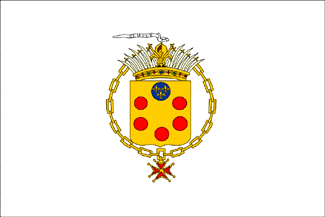
by Jaume Ollé, 2 November 1998
The Medici family governed after 1421. A revolt deposet them
in 1502 but Alexander Medici retook the power in 1512. in 1527
another revolt expelled the Medici family but Charles V restored
Alexander in 1531 and give him the title of duke of Florence. He
was succeeded by his son Cosm, in 1537, who took the title of
Duke of Tuscany after the conquest of Siena in 1557; Cosm died in
1574 and succeeded by his son Francis I, and after him
Ferdinand.,Cosm II (1608-1621), Ferdinand II (1621-1670) Cosm III
(1670-?) and John Gaston (?-1737) . By a treatry the duchy pass
to Francis, duke of
Austria-Lorraine.
The Medici used white flag with shield. The shield wasn't always
the same exactly but always has the five red balls. This is the
flag of 1574-1586. Proportions unknown.
Jaume Ollé, 2 November 1998
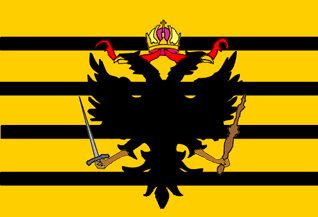
by Jaume Ollé , 2 November 1998
Flag of the Austria-Lorraine dinasty from 1749 to 1765
Jaume Ollé, 2 November 1998
The cover of [sie63] shows what
the book describes as approximately a quarter of a flagchart, one
of many to roll of the, mostly Dutch, presses for the use of
seafarers: "Tableau des Pavillons que la Plupart des Nations
arborent a` la Mer. Faitau de'po^t des cartes et plans de la
marine pour le service des vaisseaux du Roy par ordre de M. de
Machault, Garde de se'aux de France. Par le Sr. Bellin Inge'nieur
de la marine. 1756." [beL56]
On the 4th row from the bottom there is "Pavillon de
Toscane" - A white flag (16 unit hoist), with a red cross
with two unit wide arms and a one unit wide gold fringe. The
cross is slightly asymmetrical: The lower edge of the flywise
arms of the red cross follow the middle line of the flag.
Peter Hans van den Muijzenberg, 4 January 2001
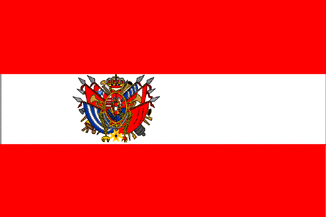
by Jaume Ollé, 5 November 1998
In 1765 Tuscany adopted the austrian colors with the shield of
the Austria-Lorena house (probably near to hoist). Towards 1815
the shield has three flags on each side, in different order but
the three on the right side are the same of three of left side.
One flag is red, another red-white-red, and the last one blue
with three (?) white bars. I don't know these last flags but
perhaps they could be attribued to the ducal standard (red flag,
with shield ,I assume) and merchant flag (blue white flag). Of
course the R-W-R flag is the national one.
Jaume Ollé, 5 November 1998
Flag c.1840 to1860 (except 1848-49).
Jaume Ollé, 5 November 1998
At J.W Norie - J.S. Hobbs: Flaggen aller seefahrenden
Nationen, 1971[ nor71] (original
print 1848):
228 Tuscany War - The flag in N/H has the arms centered, what
apparently is intended as the same shield, a similar yellow
"ornament" around it (though not as Italian), but the
cross is not below the shield, but rather under it, that is: It
is mostly covered by the shield with the double tips black,
fimbriated light, stick out from behind the ornamentation, and
between shield and crown (as on the upper side the ornamentation
merely curls around the corners then stops, leaving the centre
top free). The crown is of the type where the 2nd and 4th arc
also arc wide enough to slightly descend near the middle of the
crown, as are most crowns we represent as up-arced, making it
wider. The objects around the shield appear to be, on the dexter
side: A spear with a yellow over red flag of at least six
stripes, lower and behind a halbard, blade downward, etc. a spear
with a a mono-coloured flag of at least three yellow flywise
stripes, another such halbard, all staffs sticking in the red, a
barrel of a (hand) gun, a horn (like a post horn), a drum, all in
the white, and in the lower red what appear like the lower end of
the two spears from the other side, appearing from under the
flags and placed together, though the angles don't allow for
this, with a cross on a chain hanging from one end (A rosary
wound around them? This is probably something completely
different, but I have no idea what they are!). Sinister is a
mirror image, except the fore- and up-most flag is red over
yellow, the one behind it blue over yellow. Hanging from the
sideways arms of the cross is the Order of the Golden Fleece
around the lower half of the shield. And over it a vertical
pennant with the hoist just the arms, at least, the shield, the
crown, something beside it and the order hanging below it, white
outlined in black, and the fly red before white before red. I
don't know about the yellow and white bits of the flags, or the
details of where the red should have been, but the blue was most
definitely placed there on purpose. What are all these flags?
229 Tuscany Merchant - As 228, but only the ornamented shield,
the crown, the cross and the Order of the Golden Fleece, slightly
off-set, and without pennant.
Peter Hans van den Muijzenberg, 12 November 2001
Though it would not be very easily visible on the flag of this
size, the Hungary Moderne should include a crown, ie. the
double-cross should be issuing from a golden crown standing on
the triple hill. At least I think it should, even if such a
small detail would really be sometimes left out.
What's the idea of having Hungary in the coat of arms at all?
I know that Tuscany was at the time ruled by Habsburgs - but did
the rulers have any actual connection to Hungary?
Željko Heimer, 5 May 2003
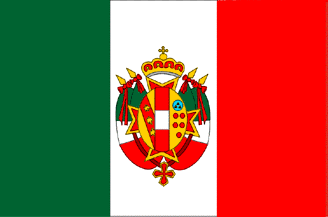
by Jaume Ollé, 7 November 1998
Tuscany 1848-49.
Jaume Ollé, 7 November 1998
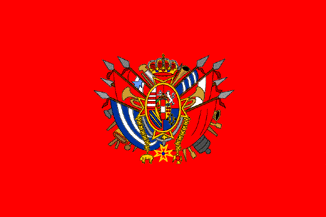
by Jaume Ollé, 5 November 1998
Supposed ducal standard.
Jaume Ollé, 5 November 1998
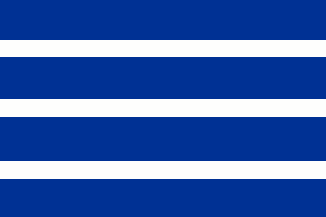
by Jaume Ollé , 5 November 1998
Supposed merchant flag.
Jaume Ollé, 5 November 1998
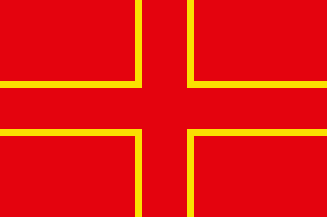
by Jaume Ollé, 5 November 1998
Reported merchant ensign.
Jaume Ollé, 5 November 1998
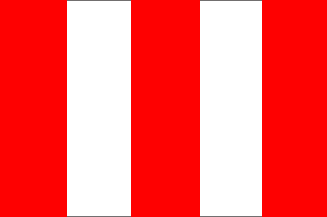
by Jaume Ollé, 7 November 1998
Pilot Flag.
Jaume Ollé, 7 November 1998

by Jaume Ollé, 20 February 2003
No. 260 - Tuscany navy
Source: [stb62]
Jaume Ollé, 20 February 2003
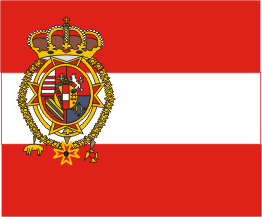
by Jaume Ollé, 20 February 2003
No. 261 - Tuscany, commercial before 1860.
Source: [stb62]
Jaume Ollé, 20 February 2003

by Jaume Ollé, 20 February 2003
No. 262 - Tuscany, commercial before 1860.
Source: [stb62]
Jaume Ollé, 20 February 2003
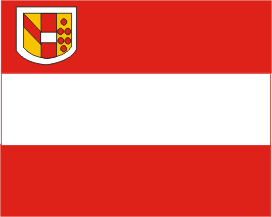
by Jaume Ollé, 20 February 2003
No. 263 - Tuscany coasters.
Source: [stb62]
Jaume Ollé, 20 February 2003
No. 325 - Tuscany, pilot flag (apparently changed).
Source: [stb62]
Jaume Ollé, 20 February 2003
No. 714 - Tuscany, at the foremast, pilot required.
Source: [stb62]
Jaume Ollé, 19 June 2003